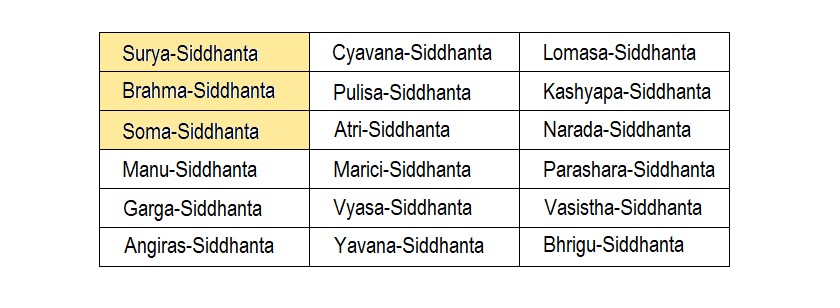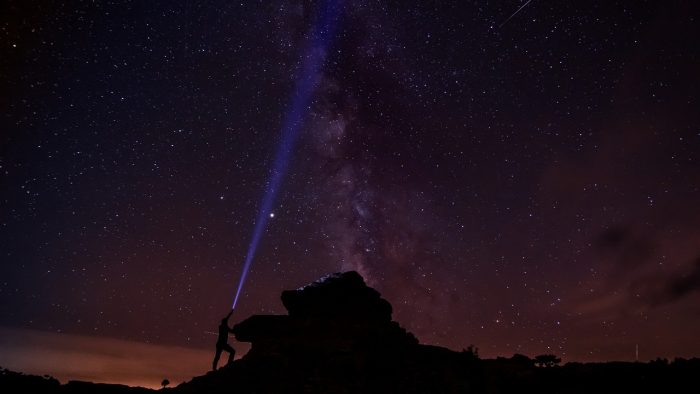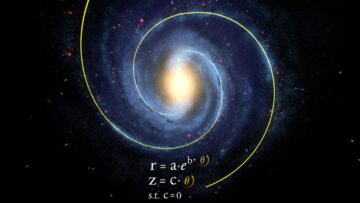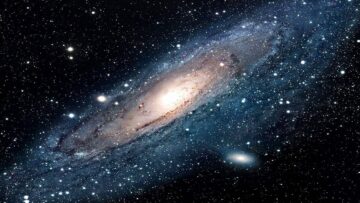In the previous article of this series, dear reader, we read about one of the great wonders of ancient Indian science, namely, the Pulsating Epicycle.
Leaving behind Wonders, let us now don our Sherlock Holmes deerstalker hats, and enter into the world of Mysteries.
Being a very ancient science, there are, needless to say, dozens of baffling mysteries in Indian Astronomy, most of them related to some technical issue or the other.
Of those many unsolved conundrums, let us examine in this article a rather peculiar mystery, which is in fact more a psychological puzzle than a technical one.
“How often have I said that when you have excluded the impossible whatever remains, however improbable, must be the truth.”
– Sherlock Holmes, The Sign of Four
Mystery # 1 – Authors Anonymous
First, some background.
Most readers will be aware of the hijacking of Indian Astronomy that took place in the 19th and 20th centuries, engineered by the colonial British rulers and their European cohorts, and egged on by the evangelists.
The main thrust of the colonial argument was that Indian Siddhantic Astronomy was borrowed wholesale from their European cousins, the Greeks, somewhere in the 200-400 AD timeframe.
Let us briefly examine this.
Looking at Greek astronomy, we note the interesting fact that there is in that entire science but a single book (The Almagest), and a single author (Claudius Ptolemy).
In sharp contrast to this, there are in Indian astronomy literally hundreds of books and many dozens of authors.
Thus, on a physical scale at least, comparing Greek and Indian astronomies, nay, suggesting that the entire gamut of Indian astronomy was borrowed from the Greeks, is not only laughable but borders on the insane.
Indians books on astronomy span a great length of time – from the extremely ancient (many thousands of years old) to the moderately ancient (one thousand years old or so), to the most recent (a few hundred years old).
These Indian books usually fall under one of three categories: Siddhanta, Tantra, or Karana.
A Siddhanta is a full treatise, which starts with the fundamentals, and undertakes a complete and rigorous theoretical treatment of all topics on the subject. It does not provide examples, practical shortcuts, and other such conveniences. It is written with the mathematician and theoretical astronomer in mind.
A Karana lies at the other end of the spectrum. It is composed for the benefit of the village astrologer; one whose needs are completely practical, and who is not very concerned with the background of his calculations, or with the theoretical aspects of the model. It usually has very simple instructions, cryptic formulae, shortcuts, and examples, with little or no explanation provided.
The Tantra falls in-between the other two. It is suited for the astrologer or budding astronomer who wishes for a deeper dive into the proceedings, while not quite reaching the level of a mathematician or a full-fledged expert on the subject.
With that introduction out of the way, let us edge closer to our mystery.
The Ego
Whoever designed the human psyche had a tough task.
On the one hand, there had to be a mechanism (the Ego) that assumed ownership of the system (body/mind); a mechanism that was acutely aware of what is ME and what is not-ME; an entity that assumed full responsibility for the security, upkeep and prosperity of the system – short term and long term; that was ready for fight or flight, as the situation demanded.
On the other hand, that mechanism, the Ego, had to be pliable enough to live in a community with other Egos; where its individual goals and interests may have to be side-stepped in the larger interests, or survival, of the group.
The author of the Katha Upanishad refers to the Ego as the Charioteer (or Chauffeur) of the body, an excellent correlation. Like a Chauffeur, the Ego does not know of the internal workings of the system (carburetor, gear-train, engine-block, etc.), but can control the gross external parts (steering, accelerator, brakes, etc.), to make sure that the system as a whole goes about its tasks and reaches its goals in a secure manner.
The Ego in Sanskrit is a beautiful word – Aham-kara, which translates to ‘the-ME-thing’.
A modest amount of Ego is a decidedly healthy thing. It fosters pride in oneself, one’s home, one’s nation, one’s appearance, the quality of one’s work, the cleanliness and order in one’s environment, one’s behavior and treatment of others, etc. A healthy Ego also tends to evaluate itself mostly on absolute terms, caring less about comparing itself with others.
An excess of Ego, on the other hand, can lead to evaluating oneself relatively, constantly comparing oneself with others, and getting stung by their achievements.
Ego in the World of Science
We are all familiar with the fact that the men and women of the intellect (scientists, if you will) are not immune to feelings of Egotism, Hunger for Recognition, Envy, Anger, Frustration – the entire gamut of unpleasant human thoughts and emotions.
History is witness to the many inter-personal battles between the famous who’s who of Science.
Isaac Newton, for example, was described by his deputy as: “the most fearful, cautious, and suspicious temper that I ever knew.” Newton had run-ins with quite a few of his famous contemporaries including Robert Hooke, Wilhelm Leibniz, and John Flamsteed.
It is reported that Newton’s antagonism towards Hooke over the Theories of Gravitation and Optics was such that when he took over as President of the Royal Society (after Hooke’s passing) he had all of Hooke’s letters and communications destroyed, and the one-and-only portrait of Hooke removed from the Society walls, as a result of which today we have no idea of Hooke’s appearance.
Newton’s long tussle with Leibniz over the invention of Calculus is very well-known.
The astronomer John Flamsteed once made the accusation that Newton had developed his Theory of Gravity using Flamsteed’s astronomical data (in his words, “using the ore I had dug”). Newton rejoined that it was he who took Flamsteed’s useless rocks and turned them into a gold ring!
In more modern times, we are aware of other acrimonious clashes of Titans, such as Humphrey Davy v/s Michael Faraday, Thomas Edison v/s Nikolai Tesla and Darwin v/s Owen, to name a few.
And then, there are a handful of others, like Einstein or Ramanujan, who soar so high above the congregation that they brook no rivalry or malice; they are the untouchables, so to speak.
Ego in Indian Scientists of Yore
In the light of the above, let us examine some ancient Indian works on astronomy, and study the character of some Indian luminaries of the past from the Ego point of view.
We note that all of these ancient authors begin their works with great humility and piety, with a verse or two of homage to their favorite Deities, and to their teacher. But, in the next few verses, or sometimes at the end of the work, is invariably found a strong note of authorship.
There are also present warnings and admonitions to the reader, to not make light of the work, nor to attempt its falsification, at the risk of being the recipient of a curse!
Here they are then, in their own words.
Aryabhata (475 AD)
No introduction is needed of course for this foremost of Indian astronomers. Aryabhata was respected, nay, revered, by all of his successors, and he continued receiving accolades a thousand years later.
A hallmark of genius is the impact they leave on EVERY field they touch, and Aryabhata was no exception. He appears to have been a multi-talented intellect – a Newton of his time.
We learn from ancient writers that Aryabhata had written some elaborate treatises on mathematics and astronomy, all of which have unfortunately been lost.
One of these lost volumes as part of a trio of books from India that taught the first generation of Arab astronomers. His only surviving work is a minor pamphlet, the Aryabhatiyam.
He was the first Indian astronomer known to propose a rotating-earth model. It is remarkable that a leading astronomer of his time should openly oppose the millennia-old tradition of fixed, unmoving earth – like an ancient Galileo of sorts.
Aryabhata successfully bridged Indian mythology with astronomy, stating that Lanka, the mythical city on the equator, was straight south of Ujjain by 22.5 degrees (note that the modern state of Sri Lanka is not the mythological Lanka).
He also provided a date for the mythical Kali Epoch, the last of the four great ages in traditional Indian astronomy and mythology, as of Feb. 18, 3102 BC, which has been adopted by all later astronomers
Aryabhata was a renowned mathematician and one of his remarkable discoveries was the irrationality of PI (ratio of circumference to diameter of a circle). He also provided an accurate estimate of the PI for practical use.
Another innovation introduced by Aryabhata, which did not prove popular, was his alphabetical notation for expressing numbers, an invention of remarkable ingenuity.
Towards the end of the Aryabhatiyam, he states:
“By the grace of God, the precious sunken jewel of true knowledge has been rescued by me, by means of the boat of my own knowledge, from the ocean which consists of true and false knowledge.”
The fact that Aryabhata does not mention (or pay homage to) any teacher is very interesting. We can guess from this statement that perhaps, like Newton, Gauss, and Faraday, he rose from humble origins, and attained prominence largely by his own efforts.
In the very last verse of the Aryabhatiyam he states:
“He who disparages this universally true science of astronomy, which formerly was revealed by Brahma, and is now described by me in this Aryabhatiya, will lose his good deeds, and shorten his days on this earth.”
Hmm… that warning is certainly interesting.
It appears from this statement that during his own lifetime Aryabhata had not attained the rock-star status which was later conferred on him.
Due to his many singular achievements, and his new theories (rotating-earth for example), it appears that there were among his contemporaries many envious critics and detractors.
Varaha Mihira (500 AD)
One of Aryabhata’s contemporaries was Varaha Mihira, who lived in Ujjain (formerly Avanti). The fact that Aryabhata is never mentioned in Varaha’s writings strengthens our conjecture that Aryabhata was not very famous in his own lifetime.
Varaha writes in his Pancha-Siddhantika:
“Having at the outset done devout reverence to the various excellent Munis, among whom Surya and Vasishtha are foremost, and to my father and teacher, by whom I was instructed in this Sastra …”
“For the benefit of his pupils, Varaha Mihira of Avanti has composed this short treatise on the smaller planets, which makes a good agreement between observation and theory. Free from jealousy, Varaha Mihira gives this excellent short treatise comprised of 18 aryas.”
Later in the book is found more self-praise, including some unintended humor!
“He whose efforts are frustrated by Pradyumna‘s theory of Mars, or by Vijayanandin’s theory of Jupiter and Saturn, let him honor this very accurate treatise, easy to understand, which has been composed by the seer Varaha Mihira.”
“He who, although knowing the faults of others, yet does not mention them, even when an opportunity arises, but rather proclaims their good qualities; to that good man let honor be paid.”
Brahmagupta (638 AD)
Brahmagupta, like Aryabhata, needs no introduction to Indian readers. George Sarton calls him “one of the greatest scientists of his race and the greatest of his time.”
At age 30 he rewrote the Brahma Siddhanta, naming it the ‘Corrected Brahma Siddhanta’. In the book, he severely criticized many rival astronomers, including Aryabhata. Perhaps it was the rashness of youth.
Three decades later, he wrote a small Karana text, the Khanda-Khadyaka, which was one of the most widely read books on astronomy in India, where he also makes amends by praising Aryabhata. Both his books were translated by the Arabs and served to teach the first generation of their astronomers.
Given his severe criticism of other astronomers, including Aryabhata, and being labeled arrogant by many writers, it is surprising to note how modest and subdued he is in self-description. He refers to himself merely as ‘Son of Jisnu’.
“I make obeisance to Mahadeva, the cause of creation, existence, and destruction before I write the astronomical treatise Khanda-Khadyaka, which gives the same results as those of acharya Aryabhata.”
“I, Brahmagupta, son of Jisnu, have now completed the Khanda-Khadyaka. I wrote it for the benefit of students of astronomy. I hope this treatise will answer the questions of all who are eager to know the Celestial Sphere.”
Manjula (932 AD)
Manjula was a well-known astronomer of the 10th century, who made several important contributions to Indian astronomy. Like Aryabhata, only one of his minor works, the Laghu-Manasa, has survived.
“I, Manjulacharya, famous as the Sun in Prakasa Pattana, set forth the work entitled Laghu-Manasa, which is small and contains brief and unprecedented methods of planetary computation.”
“This book entitled Laghu-Manasa, which contains knowledge pertaining to the planets has been written in 60 slokas by me. Those who will imitate it, or find fault with it, shall earn a bad reputation.”
Bhaskara-II (1114 AD)
Born in Bijapur, Karnataka, Bhaskara was an Indian mathematician and astronomer who was famous for continuing Brahmagupta’s legacy in advanced mathematics.
He writes in his Siddhanta Siromani:
“Only he who has a penetrating genius, like the sharp point of a Darbha Straw, is qualified to compose an excellent work in mathematics. Excuse, therefore, my impudence, O learned Astronomers.”
“The wise Maheshwara, head of all astronomers, was a most good-humored man, and store of all sciences. His son, the poet, and intelligent Bhaskara makes this clear composition of the Siddhanta by the favor of the lotus-feet of his father.”
“The blessed Bhaskara now puts forth the work named Siddhanta Siromani, the crest-jewel of all astronomical works …”
“May the wise people be pleased with my contributions. May the spiteful people derive pleasure from ridiculing me with their ignorance, being unable to understand my contributions.”
With many apologies for the overly long background, let us now move to the actual puzzle.
The Puzzle
As we have seen above, the ancient Indian philosopher and scientist were no different from his modern European counterpart in displaying a strong Ego, not hesitating to indulge in self-praise, in eulogizing and fiercely defending his ideas and his works, and in a warning and ridiculing any would-be detractors.
That said, can we ever imagine an ancient Indian mathematician, or astronomer, wanting to remain anonymous, for any reason?
Is it likely that an eminent astronomer would compose a great, all-encompassing, magnificent work of great technical depth, and yet refrain from declaring it as his creation?
Is it conceivable that a poet can compose a great work, 500 verses long, in a complex meter, and then decline to tell the world that it flowed from his pen?
Seems very unlikely, even impossible, right?
And yet, that is exactly what we see in Indian astronomy, not once, but thrice.
Ancient Indian lore speaks of eighteen treatises, or Siddhantas, of Astronomy, as shown in the table below. Many of these are now lost.

The first three – Surya, Brahma, and Soma Siddhantas – are the oldest, their authors being represented as divinities: Surya (Sun), Brahma (Creator God), and Soma (Moon). The other Siddhantas bear the names of their human authors.
While it is generally supposed that the Surya-Siddhanta is the oldest, some consider the Brahma-Siddhanta to be so. However, of all the Siddhantas, it is the Surya that has always garnered the greatest respect and reverence, and in which each topic is treated more fully than any other.
The question does naturally arise – why would the authors of such highly technical, all-encompassing works choose to remain anonymous, by substituting the names of Deities?
The opening verses of the Surya-Siddhanta narrate the story of a famous mythological Asura King (Maya) who is greatly curious about the nature of the heavens. He propitiates the Sun God, who consents to appear, and instruct him on the principles of astronomy.
While this makes for a charming write-up, with a mix of drama and poetry, the reader will soon be under no illusions that it will be an easy read. The book is both highly technical and extremely concise.
The entire text is an elegant work, done with great care, in which an entire course in trigonometry, cosmology, and astronomy is packed into exactly 500 poetical verses.
Why in the world would the author of such a remarkable composition prefer anonymity?
Let us investigate a few possibilities.
The Colonial Take
Let us first check what the colonial Englishman thought of this. The British attributed this lack of an actual author’s name in the great works of Indian astronomy to the simple reason that these works were borrowed from elsewhere. Borrowed from where exactly? From the Greeks of course!
Ptolemy (Ptolemaios in Greek), the Greek King of Egypt, was referred to as ‘Turumaya’ in some ancient Indian texts. Taking a cue from that, the colonial scholars put forth the fanciful hypothesis that the ‘Asura Maya’ mentioned in the Surya-Siddhanta was an indirect reference to Ptolemy (Turumaya).
Note that Ptolemy the King was different from Ptolemy the astronomer. There is no mention in the Indian texts of Ptolemy the astronomer. In any case, full marks for imagination (and obfuscation) to the colonial scholars!
Today, we can dismiss such lame attempts at Eurocentrism, since there is ample evidence that the character of Ptolemy’s Greek astronomy is at complete variance with that of the Surya-Siddhanta.
In fact, an impartial study tends to indicate that the Greeks may have borrowed mathematics and astronomy from India, just like the Arabs did, a thousand years later.
University Publications?
Modern universities like Oxford, Cambridge, and MIT are known to have their own publishing presses that regularly churn out technical publications. Often these books are a collaborative effort with several experts contributing to that topic.
Now, given that ancient India had several universities like Taksha-Shila, Nalanda, and Vikram-Shila, can it be that these anonymous books are nothing but a collaborative effort by several eminent astronomers and mathematicians who taught at these universities?
While this may be possible, the chances of it appear to be remote. There are no known books in Indian astronomy where two or more people have collaborated.
Teachers usually formed their own schools which propagated their own individual ideas and fancies, the Kerala-School of astronomy and mathematics is a good example.
Though there were dozens of eminent teachers in that school, there is no evidence of a joint textbook ever being issued.
Salvaged Works of Old?
In our modern world, the past 400 years have seen an ever-increasing, exponential growth in science and technology. Today, it is difficult to even imagine that a time may come when we could lose all the knowledge gained over the past few centuries.
One could envisage, say, a collision with an asteroid, or nuclear war, or some drastic climatic change, that would potentially wipe out all urban and semi-urban centers, with only remote pockets of humanity surviving, and human development knocked back several millennia.
While today this idea of losing all knowledge all over the globe may be a stretch of the imagination, it may actually have been a reality in the ancient world, which had few urban centers of great size.
That is, when considering many millennia of time, it may be possible that human progress, instead of going up-and-up all the time, as it is today, may have been a roller-coaster, with several ups and downs.
Perhaps a period of significant progress in astronomy was followed by a long interval of stagnation and decay, in which most of the knowledge was lost or forgotten.
This was then followed by a period of intellectual recovery, in which the old texts were re-read and their contents salvaged. Naturally, the reclaimers could not claim authorship of the collected fragments, and thus they chose to dedicate it to a divine being.
Reverence, Piety, or Fear?
Could it be possible that the authors of these Siddhanta’s were moved by piety to remain anonymous?
As seen above, this appears highly unlikely. Though the Indian astronomers begin their works with a verse or two of homage to their favorite Deities, in the next few verses, or sometimes at the end of the work, is invariably found a strong note of authorship, at times including the author’s lineage as well.
How about fear? Some technical authors in the past have published anonymously out of dread – fear of the clergy, or fear of ridicule. Some, like Newton, have published anonymously to avoid needless disputation. But we can probably dismiss these reasons, as these ancient Siddhantas are not brief articles on one or two topics, but complete textbooks on their own.
The Spoils of War?
Most readers may perhaps not be aware of Operation Paperclip.
After Germany’s humiliating defeat in WW-I, the Treaty of Versailles was signed, which prohibited Germany from having an Air Force, among other things.
The ultra-nationalist Germans, however, created scientific societies and hobby clubs, that seemed harmless outwardly, but were secretly conducting serious research into advanced weaponry, including tanks, guns, planes, submarines, and rockets.
By the beginning of WW-II, German engineering was producing the best armaments in the world, which enabled their armies to sweep aside all opposition in Blitz-Krieg (lightning war) campaigns, which brought all the mighty empires of Europe to their knees.
After WW-II, both the Western Allies and the Soviets were quick to realize the treasure trove of technical know-how leftover in post-war Germany. Both put into operation secret programs to recruit German scientists.
The American program was codenamed Operation Paperclip, which was successful in bringing over nearly 1600 German specialists and their families over to the American side.
As one German engineer quipped: “We despise the French, we are mortally afraid of the Soviets, the British cannot afford us, so that leaves the Americans.”
Coming back to our puzzle of anonymous authors in astronomy, we ask in curiosity – can it be possible that these author-less books are actually the result of an ancient Operation Paperclip?
Are these the astronomical achievements of a great, bygone ancient culture, which was overcome militarily by another, with the victor seizing the knowledge among the spoils of war, and dedicating it to his own Gods.
Was there a resourceful, warlike nation in some region of India, on the lines of post-WW-I Germany, with brilliant scientists and an aggressive leader.
To stir the imagination, we do have several references in the Puranas to the forces of Good (Devas) militarily overcoming the forces of Evil (Asuras), even though the Asuras had more brilliant scientists among them than the Devas. The story of Kacha and Devayani is an excellent example.
Mystery Summary
The greatest works of Indian Astronomy, namely, the Surya Siddhanta, the Brahma Siddhanta, and the Soma Siddhanta are attributed to divinities, having no professed human authors.
All three are all-encompassing technical works of great depth, written in eloquent poetical verse. They are also of immense age – upwards of 7000 years old, having been updated periodically.
It is unclear, as yet, why these grandest of works in Indian astronomy are author-less.
Closure
Let us know your take if any, dear reader, on this baffling puzzle of anonymous authors in Indian astronomy.
To be continued…
Explore Indian Astronomy Series
This Series was first published on India Facts.
Disclaimer: The opinions expressed in this article belong to the author. Indic Today is neither responsible nor liable for the accuracy, completeness, suitability, or validity of any information in the article.









